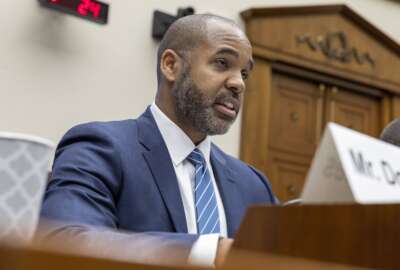
FedInsights by Tableau
How the Census Bureau built trust through customer experience
2020 was the first time in history the U.S. Census included an option to respond online. Wanting to find ways to encourage engagement, the U.S. Census Bureau...
2020 was the first time in history the U.S. Census included an option to respond online. Wanting to find ways to encourage engagement, the U.S. Census Bureau created a public-facing map of responses by neighborhood powered by Tableau. The response-rate map became increasingly critical as the pandemic severely limited in-person interactions of census takers in communities.
The idea behind the map is that because Census data is what determines how much funding local governments receive from the federal government for things like infrastructure or education, local community leaders would be incentivized to encourage participation from within. And in order to make the experience as easy as possible, the U.S. Census Bureau and Tableau created a simple website with near-real time data updates.
“It was important that we found a way to connect with citizens, to be accountable and transparent,” said Gerard Valerio, solution engineering director for the public sector at Tableau. “The more data that’s collected, that results in a higher response rate, and the better it is for a community. With this visualization, residents and community leaders could see their progress and take action to increase the response rate before the collection deadline.”
But that’s not the only way it encourages responses and engagement with the Census. Accountability and transparency foster trust in the government, and the more citizens trust agencies, the more likely they are to interact with them. Publishing this response data in publicly available maps is one way to build that relationship with constituents. It becomes its own loop of self-affirmation.
“That’s the great thing about working with data and insights, there should be some sort of loop, which is how you know you’re improving,” Valerio said. “There’s the age old saying: You can’t manage what you can’t measure. And therefore, if you measure it by collecting data, then you know whether or not you’re improving, whether or not you’re hitting the target on that desired outcome.”
That’s also why the U.S. Census Bureau, spearheaded by data visualization leads Ryan Dolan and Gerson Vasquez, and Tableau started this project with the end already in mind. They began by asking what a great customer experience would look like, and then worked backward to determine what data and processes they would need to drive the desired actions and responses. Then they gauged responses from citizens to get feedback and input on how to make the experience better.
There was also the added wrinkle of the pandemic, which made online participation even more important than had been anticipated. Tableau committed to building the map for the U.S. Census Bureau in 2019, long before the pandemic began. But when COVID-19 was in full swing early in 2020, the U.S. Census Bureau became alarmed by the refresh rate of their content. The U.S. Census Bureau was on Tableau Public, and was suddenly competing for bandwidth with data scientists and enthusiasts who were tracking the pandemic and its effects with their own custom visualizations.
“So we worked together to help stand up another cluster,” Valerio said. “We added additional capacity on Tableau Public and provided a temporary license and support. And the bureau went ahead and stood up their own standalone cluster to handle and be purely focused on the incoming traffic from the 2020 U.S. Census response rate.”
Tableau helped the U.S. Census Bureau do that within a very short turnaround timeframe, taking only a couple of months for testing. Valerio said it was a seamless experience.
And this wasn’t an uncommon experience during the pandemic, Valerio said. Lots of federal, state and local governments increased their usage of Tableau Public and embedded dashboards during the pandemic in order to be more transparent about data, inform and safeguard residents, provide a better experience for their constituents, and drive specific outcomes.
Following the end of the collection period, the U.S. Census Bureau has continued their innovative and transparent approach by publicly sharing the 2020 Census data in easy-to-understand, appealing visualizations in an online gallery. The visualizations range from sales tax and business formation data to population and apportionment data, including an interactive “Historical Apportionment Data Map” which enables users to view more than 10 decades of data.
Copyright © 2025 Federal News Network. All rights reserved. This website is not intended for users located within the European Economic Area.
Related Stories




